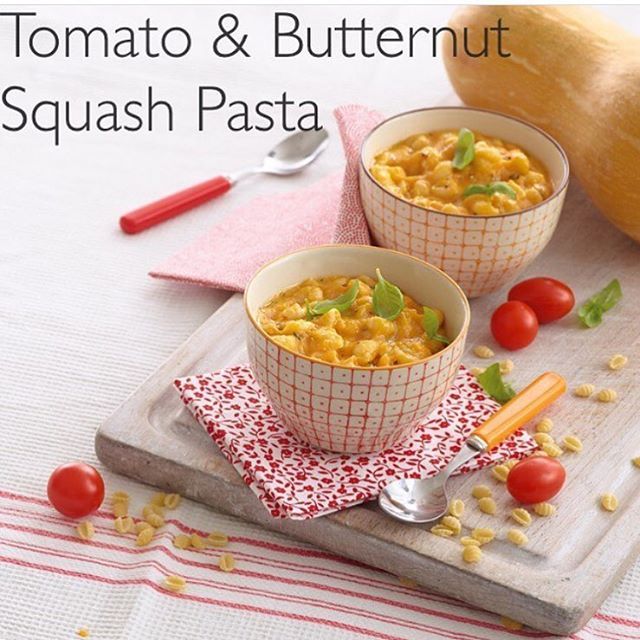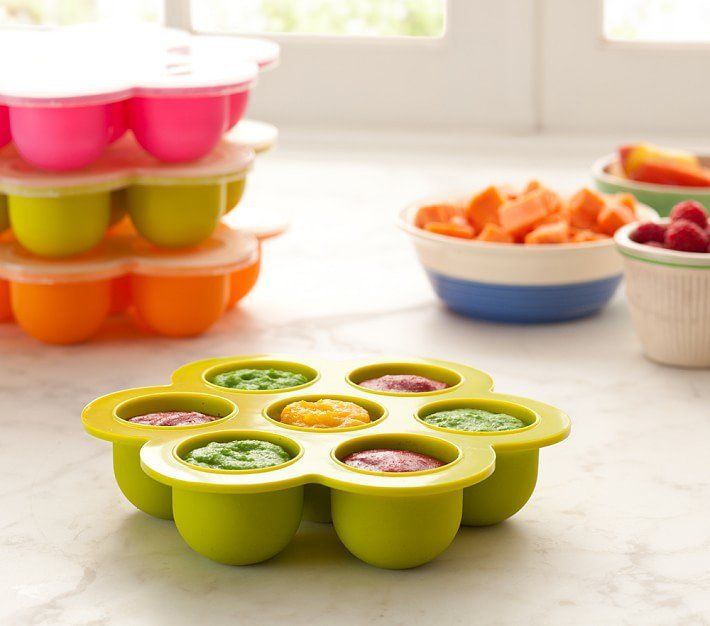What do i feed my baby betta fish
Baby Betta Fish Care Tips & Tricks
Betta fish are extremely popular pets due to their fantastic personalities and attractive physical features. Plus, they add a sense of elegance and style to any aquarium. But, there’s something even more magical about baby Bettas. After all, everyone loves babies, and baby bettas are so adorable. However, baby betta fish care is not easy. They require special care and attention than adult Bettas. In this article, we’ll discuss some baby betta fish care tips that you need to know before you adopt one of your own.
Grow them separately. After a baby betta reaches the fry stage, it is advised to keep it in a separate tank that can hold at least a gallon of dechlorinated water so that the fish can grow up in a peaceful environment. This baby fish should be kept alone until it reaches adulthood, to save it from all possible injuries caused by other aquarium inmates. Additionally, many bettas are aggressive, and even young Bettas will display aggressiveness towards other fish in the tank. Therefore, to ensure that they have a stress-free environment, it is best to keep them alone.
Supply various types of fish foods. A baby betta fish needs different types of foods for its healthy growth. Hence, the pet owner needs to provide living Grindal worms, Black worms, White worms, living or dried Tubiflex worms, and live or frozen Brine Shrimps as the first foods of this baby fish. In many instances, fish pellets will be ignored by your baby Betta, and they could starve to death without live food. If your baby betta accepts pellets, you must feed them small pellets or crush them up and then add them to the water. It is recommended to feed them a limited amount of food to ensure that you don’t contaminate their water and provide them with enough food but not too much. If you overfeed them, they can develop swim bladder disease and other ailments. Keep in mind that Tubiflex is the least messy food, and it does not make the aquarium too dirty. However, all the foods mentioned above are readily available online or in most specialty pet stores.
Maintain optimum temperature. The baby betta fish cannot thrive well in too cold or too hot water, as it is susceptible to temperature changes. It is best to maintain the temperature of the aquarium water at around 80 degrees F or 27 degrees C. Therefore, a small adjustable heater should be attached to the aquarium, to heat the water to this essential level of warmth. Colder water can make the baby fish ill with various ailments, like loss of appetite and skin diseases. If your baby betta is small, you can consider putting their tank or bowl in another more massive plastic tub filled with water and then only heat this water with your heater. This additional step will ensure that you can regulate the water without fear of harming your baby.
Replace tank water frequently. Keeping your baby betta’s water clean is extremely important. Therefore, you should change 100% of their water at regular intervals. We do this by adding some of the older water and gently netting the baby and putting them into a holding tank that has the older water.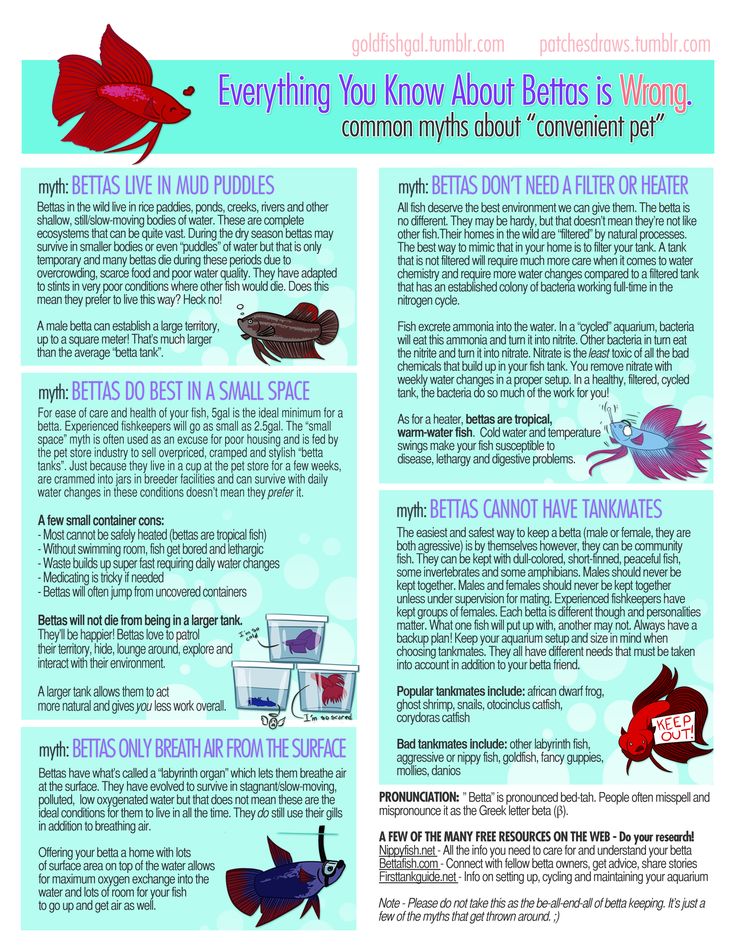 Frequent water changes will ensure that your baby betta remains healthy. However, be careful to match the new water’s temperature with the old temperature when you’re changing the water so you don’t shock your fish.
Frequent water changes will ensure that your baby betta remains healthy. However, be careful to match the new water’s temperature with the old temperature when you’re changing the water so you don’t shock your fish.
We typically prepare the water for the holding tank about 24 hours beforehand. We also add an adjustable heater to and set it to the exact same temperature as the existing water that the fish is used to. Afterward, we pour a small amount of the newly conditioned water into the baby’s holding tank at small intervals. We do this for about 30 minutes so the baby has time to acclimate to the new temperature and water parameters. Then, we carefully net the baby and transfer it into the clean heated water.
Additionally, if any medication is needed for the baby betta, it can be added to this newly conditioned water. Finally, we add Indian almond leaves to the water to lower the PH. Keep in mind that frequent water changes are necessary to keep the baby healthy.
Add the proper filters. It is essential to use a high-quality sponge filter to keep the water cleaner for a longer time. The filter size depends on the size of the tank, and a sponge filter does not injure the baby fish even if the baby betta bumps into it while swimming. Other varieties of filters may not be suitable for a tiny betta fish that is so delicate. However, make sure that any filter you have doesn’t have a steady flow, as all bettas may be swished around or injured due to a fast-moving filter.
It is essential to use a high-quality sponge filter to keep the water cleaner for a longer time. The filter size depends on the size of the tank, and a sponge filter does not injure the baby fish even if the baby betta bumps into it while swimming. Other varieties of filters may not be suitable for a tiny betta fish that is so delicate. However, make sure that any filter you have doesn’t have a steady flow, as all bettas may be swished around or injured due to a fast-moving filter.
Add live or silk plants. Live plants are beneficial because they absorb carbon dioxide and provide oxygen and providing hiding spots, so your baby feels secure. Silk plants offer hiding spots, too. If you choose silk plants, make sure they don’t have any sharp plastic parts on the silky parts.
In conclusion, baby betta fish care is a bit more complicated than caring for an older fish. If you’re willing to follow the tips mentioned above, you can raise your baby into a healthy adult and ensure that it has a BETTA life!
What Do Baby Betta Fish Eat?
As an Amazon Associate I earn from qualifying purchases.
You’re not alone if you’re wondering what betta fish food is or how much and when to feed them. Surprisingly, one of the most frequent inquiries on first-time betta keeping is about overfeeding! It’s not always correct to take your pet’s needs into account when making a purchase. For example, you should never trust the information from pet stores or food package labels.
Bettas are picky eaters and will typically select food on the surface of a tank’s water rather than in the substrate. Because bettas are primarily carnivores, they require a well-balanced diet that is high in protein. It’s not true that bettas can live on the roots of plants alone.
Many betta keepers prefer feeding pellets since they are easy to use and have a high success rate. Because pellets make less mess, they may be portioned out for feedings with ease. Frozen or live feed can also be used as rewards or included in their daily diet.
To keep your betta healthy and happy, follow the food and feeding instructions below since they may literally be the difference between life and death for your fish.
Baby bettas generally hatch in 24 to 48 hours after being fertilized. The baby fish will absorb the rest of their yolk sac for three to four days once they have hatched.
During this period, the baby betta fish will get nutrients by absorbing the yolk from their sac. Thus, at this point, you won’t be required to feed them anything extra.
Hard-boiling an egg and placing a tiny portion of cooked yolk in a jar of water will ensure that your fry has something to eat if they want it. Pour some of the water from above into your baby betta fish tank after shaking the jar thoroughly to dissolve the yolk. The fry will be ready to accept small live foods when they become free-swimming.
I
nfusoriaInfusoria are a specific kind of fry food in liquid form. It is frequently used to feed baby betta fish. Infusoria are tiny enough to be consumed by newborn betta fish, making this sort of diet particularly appropriate for them.
Infusoria, like other food sources for baby fish, are attractive to young fish. You can cultivate your own infusoria from culture or buy them online and in some pet shops.
Simply collect some infusoria from the container you bought them in, or from your culture tank if you produced them yourself, using an eyedropper, and squirt them into your betta aquarium directly above your baby betta fish to feed them to your betta fish.
Brine Shrimp NaupliiYour baby betta fish should be able to handle somewhat larger foods after a few days of eating infusoria. Baby brine shrimp, also known as nauplii, is a special food source that fir the needs of baby betta fish. This is mainly because of their high-protein tendencies that the betta can consume easily.
Brine shrimp nauplii can be purchased online or in pet shops and fed to baby betta fish in the same manner as infusoria. Take an eyedropper full of water from the brine shrimp container and squeeze it straight into the betta tank, capturing as many of the brine shrimp nauplii as possible.
Your baby betta fish will be able to consume a variety of live and frozen feed at three to four weeks of age in addition to standard betta pellets. Additionally, you can also consider continuing feeding your baby betta fish with brine shrimp alongside its current diet. However, you should start adding frozen and freeze-dried foods like daphnia, bloodworms, and micro-worms to it. Make sure they are crushed properly to make it easier for your pet fish to consume.
MealwormsFrozen and dehydrated foods should be chosen with caution. When selecting frozen or freeze-dried meals, choose carefully because they are prone to parasites and germs that can prove to be detrimental for your betta fish. You can look up online to search for reputable pet shops that sell authentic frozen-dried foods. You may also try sprinkling a little betta food into the tank once in a while to test if the fry will accept it. If you want to offer your betta fish some processed foods on occasion, grind up betta pellets or granules and sprinkle a very tiny quantity in the aquarium.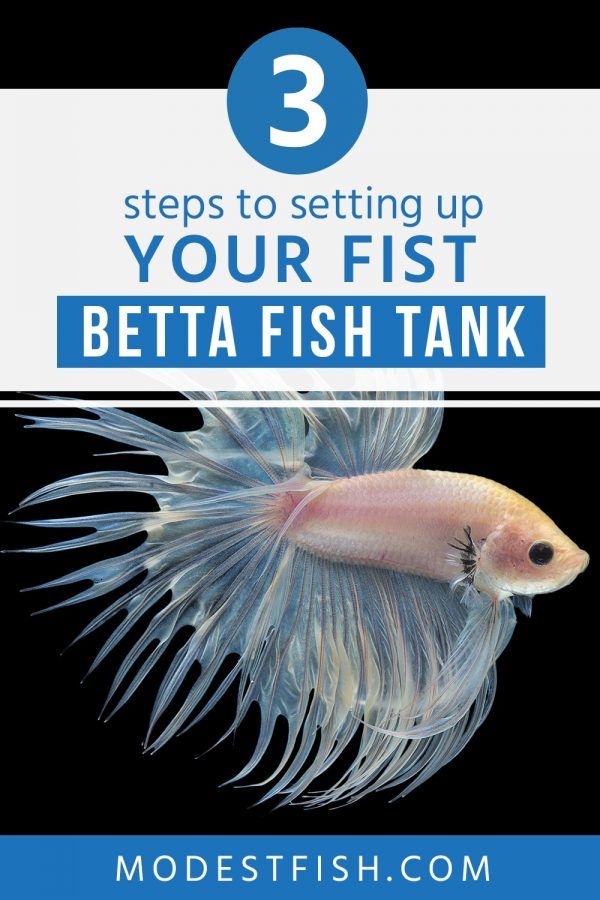
Betta fish in the wild are insectivores, or more accurately, carnivorous insects. They also consume a variety of tiny invertebrates and larvae on occasion. Betta fish originate from Asia, and they would naturally be native to the region. They’re also high in nutrients like protein, which is important for wild and captive betta fish.
Insect LarvaeWhat Do Baby Beta Fish Eat in Aquariums or Fish Bowls?While Bettas are often portrayed as living happily alone in a tiny fishbowl munching on the roots of plants, this is untrue. While Bettas may consume vegetation from time to time, they are carnivores that require a high-protein diet.
It’s important to feed your Betta appropriately, especially since replicating their natural diet is nearly impossible. Specialized Betta pellets are perfect for ensuring that your Bettas get all of the nutrients they need. If you want to keep your Betta healthy, don’t give it food made for other tropical fish. If you offer pellets, soak them in water for 5 to 10 minutes before feeding them to your baby betta fish.
If you offer pellets, soak them in water for 5 to 10 minutes before feeding them to your baby betta fish.
The first month of your baby betta fish’s life is critical. The only way to keep it alive and healthy is to feed your baby betta fish with special food items that have a high protein ratio. In addition, you will also need to maintain your aquarium or water tank to ensure that it grows quickly without any issues.
Step 1A sponge filter in your baby betta tank will help to keep the water clean. A sponge filter is a unique invention that helps to filter out the water without actually disturbing its flow. Anything that may disturb the flow of the water can essentially harm newly hatched betta fish.
Step 2Set your aquarium heater’s thermostat to keep the water at a steady temperature of 74 to 80 degrees Fahrenheit. If the temperature in your baby betta tank fluctuates too much, it might have a detrimental impact on its health and development.
Wait for your baby betta fish to finish absorbing their yolk sacs. The parent betta fish will do everything to protect their younglings until they are able to fully absorb the yolks from their sacs and are able to swim independently. After an incubation period of up to 16 days, mouth-brooding betta fish will release the fully developed fry.
Step 4Feed your young froglets tiny amounts of infusoria several times a day after they’ve absorbed their yolk sacs. Infusoria is a liquid fry food that may be added directly to the tank with an eyedropper. Find infusoria in stores or raise your own colony from cultures if you can’t find it locally.
Step 5After a few days of feeding newborn betta fish infusoria, transition them to accepting brine shrimp nauplii. Young bettas will develop swiftly if fed appropriately, and they should be ready to accept larger foods after three to four days.
Step 6After three to four weeks, offer finely crushed freeze-dried and frozen foods such as bloodworms and daphnia.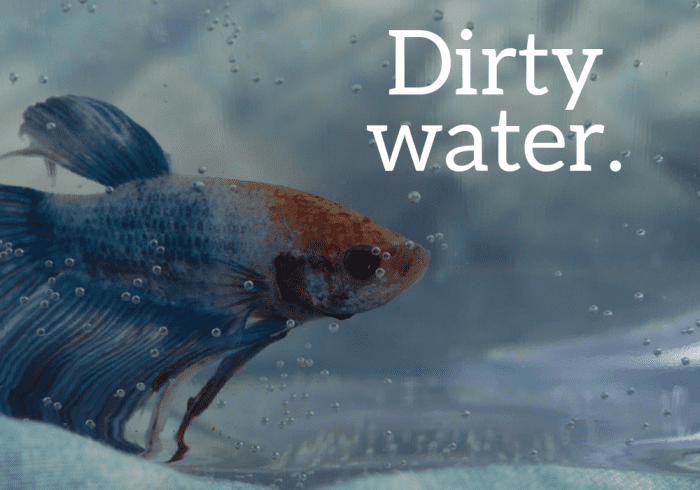
At 6 weeks, transfer the fry to a 10-gallon grow-out tank. A grow-out tank is simply a bigger tank in which your fish will have more room to develop. If you have a lot of baby bettas, you may want to split them into two separate grow-out tanks.
Step 8Weekly water changes of 25 percent of the tank volume twice a week are required to keep high water quality in your grow-out tanks. Replace the dirty water that has been drawn from the bottom of the tank with dechlorinated tap water at the same temperature as that in the tank using an aquarium vacuum or a length of airline tubing.
Step 9Offer a variety of foods to your baby betta fish, offering small amounts of live, frozen, and pellet foods several times a day until they are three-quarters of an inch long.
Step 10To grow your baby betta fish to maturity, separate them into individual cups or bowls. You should be able to tell the difference between males and females at this age. Male baby betta fish will have longer fins and brighter colors if you can’t tell the difference.
Male baby betta fish will have longer fins and brighter colors if you can’t tell the difference.
You may separate all of your betta fish or opt to keep the females in one tank while keeping the males in separate cups.
How To Feed Baby Betta Fish? A Beautiful Betta FishPlace an infusoria culture in a large plastic or glass container filled with water first. Place a few pieces of lettuce into a glass jar, boil them for approximately one or two minutes, and add them to the water as an infusoria food. To keep the lettuce warm, use an aquarium heater.
Wait for a few minutes after feeding the betta fry, after they have hatched, before offering them food. This is when the male betta takes care of the betta fry. The fries do not require any nourishment at this point. Feeding any food to allow their bodies to remain connected to the yolk sac after hatching is not advised.
You can now remove the male betta from the tank once the betta fry has started swimming. It’s simpler to care for the juvenile betta fish reared in a separate aquarium after removing the male betta from the main tank.
It’s simpler to care for the juvenile betta fish reared in a separate aquarium after removing the male betta from the main tank.
The eyedropper is required for extracting infusoria water from the jar and immediately pour it into the baby betta fish tank. It’s important not to siphon any plant life while doing so. Because the infusoria are so tiny, they cannot be absorbed by the juvenile betta soon after hatching. These veggies also move about in the tank, which piques their curiosity.
On average, feed your betta fry an eyedropper of infusoria once a day, within 2 to 3 days. After the fourth day, the betta fry is ready for substantial meals.
Infusoria are also nutritious food for betta fry. The technique for feeding the fry with infusoria is similar to that of brine shrimps. Feed the betta fry every day with tiny quantities of brine shrimp so they may develop properly. Shrimps may be purchased online or from a local store, just as with the infusoria. Alternatively, you can produce your own meal.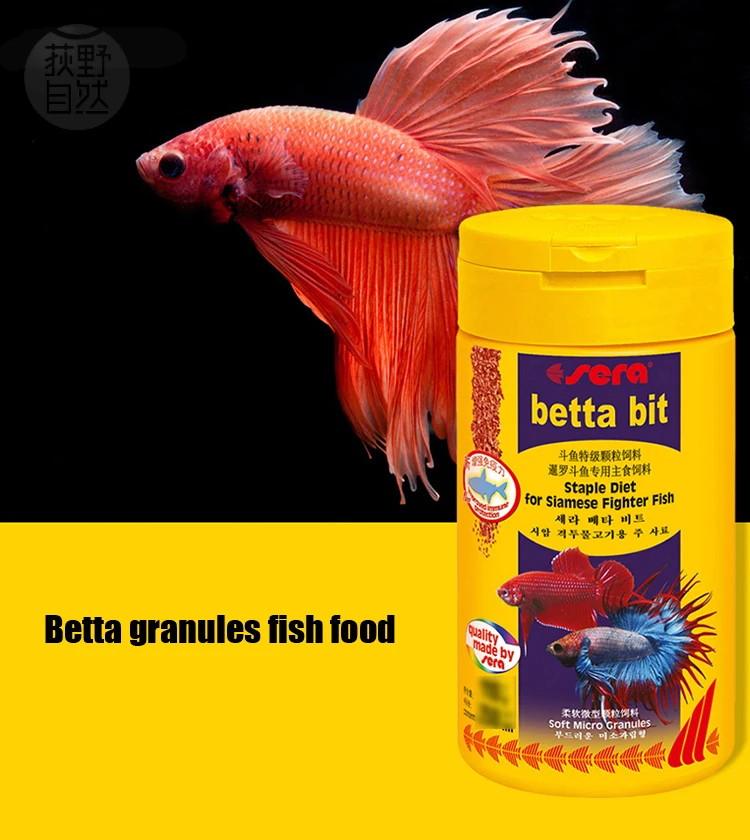
The Siamese fighting fish, often known as betta fish, is lovely to look at, but their beauty hides a ferocious temperament. Understanding the natural predators of this breed can assist you in keeping your pet baby betta fish alive.
Male BettasTwo male bettas will literally circle around each other, like two rival beauty queens circling one another and planning their rivals’ downfall. The major distinction is that your bettas won’t stop at fin-ripping; they’ll get into a physical altercation. You’ll almost certainly end up burying the loser in a fish burial. It’s preferable to keep two male bettas in separate tanks. Position the tanks next to one another and use two layers of plexiglass to protect them while they posture at each other.
GoldfishWhen a betta fish is added to a tank containing a goldfish that is aggressive, the mild-mannered goldfish will take on a defensive posture. That goldfish will shock you by nipping at the betta, and the betta will nip at your goldfish to harm it. Because the betta has tiny teeth, he can really inflict damage on his tank mate. They also prefer water that is cooler than a betta can withstand, making your pet ill. Separate them while you still have time.
That goldfish will shock you by nipping at the betta, and the betta will nip at your goldfish to harm it. Because the betta has tiny teeth, he can really inflict damage on his tank mate. They also prefer water that is cooler than a betta can withstand, making your pet ill. Separate them while you still have time.
Add cats to the list of a betta fish’s natural predators. Your little pet cat, though she may appear harmless, could be scheming how to gain access to the water and capture that delicious-looking betta for dinner.
If you don’t want your cat to eat your betta fish alive, consider buying a secure lid for your tank; one that will prevent her from opening it. She will certainly attempt, but you’ll be able to relax a bit knowing that you’ve made it very difficult if not impossible for her to break into.
Barb FishAnother betta fish rival is the barb fish, so he’s not a good betta roommate. While it may be necessary to purchase another tank for other fish breeds, it’s a smart investment, especially if you want to keep all of your fish alive and intact.
They are not afraid to use their tiny, extremely sharp, and pointed teeth in combat with rivals, as they fight and kill them. This is not a pretty sight.
Amazon and the Amazon logo are trademarks of Amazon.com, Inc, or its affiliates.
What to feed the fish Cockerel and how many times a day
Aquarium197
Cockerel fish, also known as the Siamese fighting fish, is known for its bright colors and beautiful fins. It is important to provide the Betta fish with a diet and conditions appropriate to their needs. They are different from the needs of other common domestic fish.
Before getting a Cockerel as a pet fish, find out what these fish eat, how often to feed them, and what to do if your Cockerel won't eat.
What do you feed the Cockerels?
Cockerel fish are natural carnivores and in the wild they feed on insects and their larvae.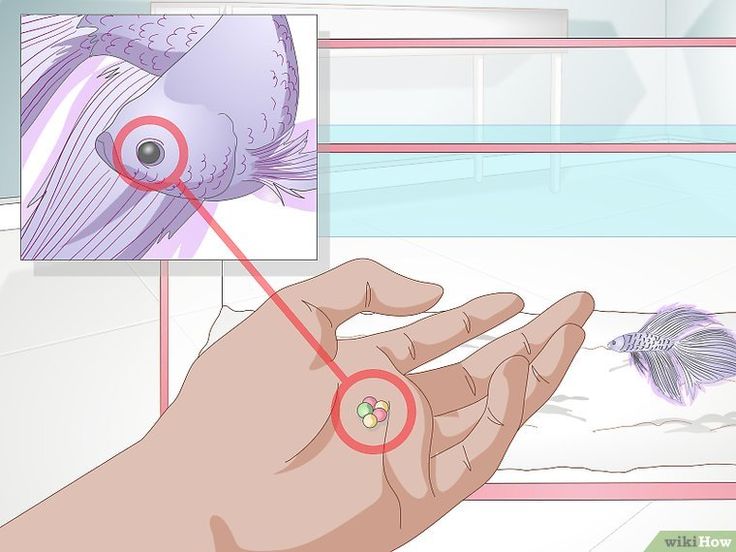 Understanding your fish's natural dietary habits will help you provide a healthy diet for your new pet.
Understanding your fish's natural dietary habits will help you provide a healthy diet for your new pet.
What do fighting fish eat
Because fighting fish are natural carnivores, they eat a diet high in protein. Some people believe that bettas can survive in a small aquarium by simply eating plant roots. This is not true and may harm your fish.
High protein Betta Pellets sold in pet stores should form the basis of your fighting fish diet. It is important to choose a pellet formula for males.
Those intended for other fish, such as tropical fish, will not be useful. Genuine Betta pellets and flakes contain just the right amount of nutrients for your fighting fish.
They are easy to divide into portions to protect the fish from overeating or undereating.
For a special treat for your fighting fish, freeze-dried and high protein foods are available. These are things like brine shrimp and bloodworms.
These treats should not form the bulk of your fighting fish's diet. They should be fed to males in moderation.
They should be fed to males in moderation.
How to feed fighting fish
It is recommended to feed bettas two to four pellets once or twice a day. The pellets expand when placed in water and are very filling for your rooster. Freeze-dried or fresh foods can be replaced with kibble 1-2 days per week.
Experts recommend ridding your tank of excess food that your fighting fish won't eat. This food falls to the bottom of the tank and if not removed will degrade the quality of the water.
The cost of feeding fighting fish
The cost of pellets and freeze-dried food for Bettas can vary greatly depending on the brand. Be prepared to pay $4 to $8 for a container of Betta pellets.
Buy fish food for Cockerels
General feeding problems for Cockerels
When it comes to feeding bettas, there are two common problems: overeating or undereating.
What to do if the Cockerel doesn't eat
The fighting fish can live 14 days without food.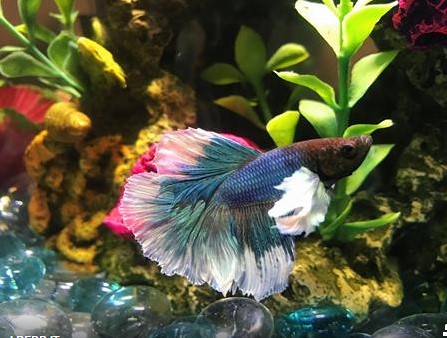 If your Rooster skips one or two meals, don't worry right away. There are several reasons why your fighting fish won't eat.
If your Rooster skips one or two meals, don't worry right away. There are several reasons why your fighting fish won't eat.
Stress from due to a recent change in water temperature, aquarium cleaning, or a major environmental change can cause your fighting fish to change their appetite as they adjust. The ideal water temperature for fighting fish is between 22 and 30 degrees Celsius.
Cockerels are often seen in containers that are too small for them . This can make them dissatisfied and not want to eat. Make sure your fighting fish has room to swim and explore.
If you notice fish turning away or spitting out food, you can experiment with different brands of pellets. Finally, with age, fighting fish will become less active and consume less food.
If your fighting fish still won't eat, maybe she got sick . In case of illness, consult a veterinarian or other specialist.
How to prevent overeating of Cockerels
Cockerels in the wild will eat food when they can find it. This allows your fighting fish to easily overeat when additional food is available. Overeating can lead to bloating, indigestion, and obesity.
This allows your fighting fish to easily overeat when additional food is available. Overeating can lead to bloating, indigestion, and obesity.
Too much uneaten food can also cause your fish's water to become dirty and unhealthy.
To prevent your fighting fish from overeating, feed them only the recommended daily amount. Clean excess food regularly with a turkey net or paper towel.
Food and nutrition for aquarium fish
The diet of fish in natural waters is very diverse. So, bitterlings, platypetsilia, mollins, gourami living in an aquarium in nature eat mainly plant foods, haplohilus pick up insects falling on the water, and cichlids (angelfish and others) are predators. In the aquarium, all species receive the same common aquarium food, which is very limited.
The diet of fish in natural waters is very varied. So, bitterlings, platypetsilia, mollins, gourami living in an aquarium in nature eat mainly plant foods, haplohilus pick up insects falling on the water, and cichlids (angelfish and others) are predators. In the aquarium, all species receive the same common aquarium food, which is very limited.
In the aquarium, all species receive the same common aquarium food, which is very limited.
A distinction is made between natural and artificial food. Whenever possible, fish should be fed with natural food that fish eat in natural conditions. But, of course, we cannot give African food to African fish. We just select the right ones.
Bloodworms are the most common natural food. A bloodworm is a larva of non-biting mosquitoes of twitchers, or bells, which looks like a bright red, segmented worm from 0.5 to 2 centimeters long. These larvae are caught at the bottom of ponds, lakes and slowly flowing rivers. This is not an easy task, and besides, it is very dirty. Therefore, when bloodworms can be bought (it is sold in almost all zoological stores), you should not catch it yourself.
Bloodworm is an excellent food for all aquarium fish larger than 1.5 cm. You need to give it based on the calculation of one to five worms for each fish one to two times a day. You can not throw a lot of bloodworms into the aquarium at once. If the fish do not have time to eat it, then the bloodworm burrows into the sand, where it often dies and, rotting, spoils the water. Bloodworms can also be fed to fish fry from 6 to 7 millimeters in size. For them, the larvae have to be cut into tiny pieces. A bunch of bloodworms (20-30 pieces) is placed on the glass and the blades are cut with quick movements, turning into a mushy mass. Having tilted the glass, the blood is allowed to drain, after which the slurry is thrown into the aquarium. You need to be especially careful when feeding fish with cut bloodworms. If even a few uneaten pieces remain in the aquarium, rotting immediately begins and the water becomes cloudy. You can store the bloodworm in a clean, damp cloth, laying it in a thin layer and placing it in a cool place (preferably with a temperature of 2-5 degrees). Sometimes bloodworms are stored mixed with sleeping tea. In this case, he lives longer, but it is difficult to choose him when feeding.
You can not throw a lot of bloodworms into the aquarium at once. If the fish do not have time to eat it, then the bloodworm burrows into the sand, where it often dies and, rotting, spoils the water. Bloodworms can also be fed to fish fry from 6 to 7 millimeters in size. For them, the larvae have to be cut into tiny pieces. A bunch of bloodworms (20-30 pieces) is placed on the glass and the blades are cut with quick movements, turning into a mushy mass. Having tilted the glass, the blood is allowed to drain, after which the slurry is thrown into the aquarium. You need to be especially careful when feeding fish with cut bloodworms. If even a few uneaten pieces remain in the aquarium, rotting immediately begins and the water becomes cloudy. You can store the bloodworm in a clean, damp cloth, laying it in a thin layer and placing it in a cool place (preferably with a temperature of 2-5 degrees). Sometimes bloodworms are stored mixed with sleeping tea. In this case, he lives longer, but it is difficult to choose him when feeding. In the summer, it is convenient to store the larvae in a plate with water and a Riccia aquarium plant placed in a bright light.
In the summer, it is convenient to store the larvae in a plate with water and a Riccia aquarium plant placed in a bright light.
There is another very good way to store bloodworms. If the larvae are laid out in a thin layer in a flat vessel with a tight-fitting lid and slightly sprinkled with water, then the so-called wet chamber will be obtained. The air there is saturated with water vapor, and there is a lot of oxygen. Larvae in such a chamber, installed in a cool place, live for a long time. There are other ways to store. Bloodworms can be prepared for future use by drying live larvae. Most fish eat dry bloodworm well, but when feeding, it is easy for them to muddy the water, and the fish do not grow fast enough. Better dry bloodworm frozen. Do not feed fish with dead, spoiled bloodworms.
Bloodworm is rare in the southern regions of Russia. But in very heavily polluted reservoirs, the surface of the silt is often, like a carpet, covered with many thin red worms, half buried in the silt. These worms sometimes multiply strongly in the aquarium, if it is poorly lit and kept untidy. This is a tubifex, or tubifix. This worm is a good food for fish. Store it in the same way as a bloodworm, or in a plate of water, changed twice a day. This method is the best, tubifex can live in such conditions for months. Before feeding, the worm is cut, otherwise it will immediately burrow into the sand.
These worms sometimes multiply strongly in the aquarium, if it is poorly lit and kept untidy. This is a tubifex, or tubifix. This worm is a good food for fish. Store it in the same way as a bloodworm, or in a plate of water, changed twice a day. This method is the best, tubifex can live in such conditions for months. Before feeding, the worm is cut, otherwise it will immediately burrow into the sand.
Excellent food for fry and small adult fish: various swimming crustaceans and mainly cyclops and daphnia. They are small, translucent and move in the water with the rowing movements of their oar-antennae. Their size is often less than a millimeter, and they are indispensable when feeding juveniles.
The brought Cyclopes are placed in a basin, changing the water from time to time. To do this, the upper layers of water are filtered through a net, and the dead crustaceans that have settled to the bottom are thrown away. Too many cyclops should not be kept - they die when overcrowded and become unsuitable for feeding fish.
As many cyclops and daphnia should be allowed into the aquarium as the fish eat within 1 - 2 hours. Daphnia are also sold dry. But if you feed the fish with one dry food, they grow and reproduce poorly. When vitamin D is added to dried daphnia, growth and fertility are improved in fish. One or two drops of an oily solution of vitamin D or fish oil are added to a matchbox of dry daphnia.
Powdered dry daphnia are placed in a special plastic or foam feeder floating on the surface of the aquarium. Like bloodworms, cyclops and daphnia can be frozen for a long time.
Amphipod (Gammarus) is another dry food for aquarium fish. Live amphipods are tasty food for many commercial fish. It is not for nothing that even a winter fishing hook (mormyshka) is shaped like an amphipod, which is sometimes called a mormysh. When dried, the crustacean is quite hard. No aquarium fish can eat it whole. But if the crustaceans are ground into dust, the fish eat them very willingly.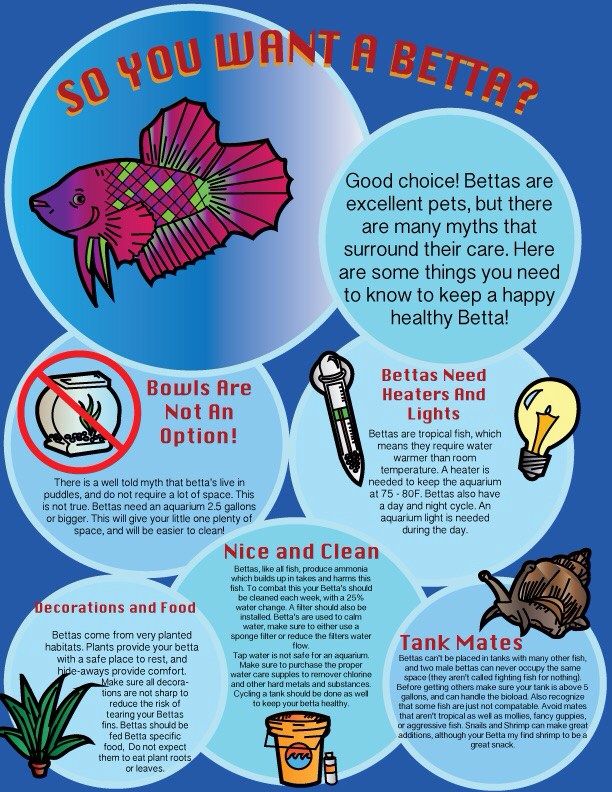 In terms of nutritional value, this food is better than dry daphnia, but, of course, it is inferior to live food. This food is suitable for many fish. It is good to feed the fish with dry food mixed with chopped bloodworms.
In terms of nutritional value, this food is better than dry daphnia, but, of course, it is inferior to live food. This food is suitable for many fish. It is good to feed the fish with dry food mixed with chopped bloodworms.
Corretra is also a live food for fish - a mosquito larva. The dimensions of the core are about a centimeter. Equal in nutritional value to the bloodworm, the coretra has some advantages in comparison with it: it does not burrow into the sand and is very insensitive to the amount of oxygen dissolved in water. In one glass, you can put several hundred correts. These larvae are very resistant to adverse conditions.
Coretra should be kept at low temperatures; in heat, it quickly pupates and becomes unsuitable for feeding. Fish accustomed to bloodworms are reluctant to catch a coretra, however, when they are hungry, they begin to eat it greedily.
Slipper ciliates are the best food for newly hatched fish larvae. It's quite easy to break it down. Take rotten parts of aquarium plants and squeeze them into a test tube.
Take rotten parts of aquarium plants and squeeze them into a test tube.
When the turbidity settles, looking at the light, they catch with a pipette shoes, which are easy to recognize by their characteristic shape. The ciliates are placed in a jar (2-3 liters in volume) with cooled boiled water, adding two to three drops of milk or yeast diluted in water. The water temperature should be 20 - 25 degrees. After clarification of the water, the ciliates are again fed with milk or yeast. After 10 - 15 days, there are usually a lot of shoes in the bank.
Ciliates are well bred if you throw a banana peel into a jar, fresh or dry - it doesn't matter. In this case, feeding with milk or yeast is not necessary. And pieces of banana peel can be placed every 10 to 15 days.
To feed the larvae, take 1 - 2 glasses of water with ciliates per day. In the jar, you immediately need to add cooled boiled or plain raw tap water and feed the ciliates. The more often you change the water, the better the shoes will multiply. One three-liter jar of shoes is usually enough to dig up a hundred fish larvae.
One three-liter jar of shoes is usually enough to dig up a hundred fish larvae.
Large fish - crucian carp, goldfish, adult macropods, gourami and others - eat earthworms well.
Artificial aquarium food should only be used when natural food is not available. A good artificial food is raw meat or fresh fish. Meat and fish are scraped with a knife, separating the smallest pieces. A substitute for ciliates is a hard-boiled egg yolk. Having shaken it in a glass of water, the liquid is dripped with a pipette into the places of accumulation of fish larvae. The yolk greatly spoils the water, and therefore it can be used only in the absence of ciliates. Instead of the yolk, you can successfully use egg powder. By the way, they can occasionally feed unpretentious adult fish, throwing the powder into the feeder to the surface.
Steamed in boiling water and washed in a net, semolina, balls of white bread, biscuits can be used in very small quantities.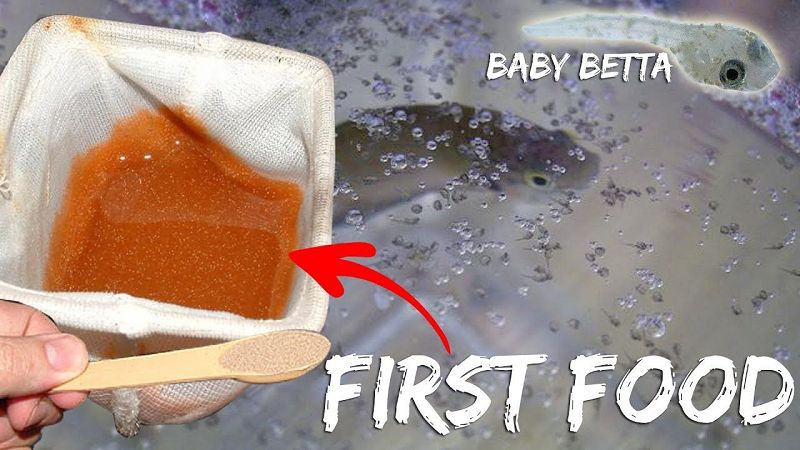
Whatever you feed your fish, you must first of all observe the basic rule: do not throw too much food into the aquarium. You need to feed once or twice a day, and immediately after the fish have eaten, the remaining food should be removed from the aquarium.
Often, leaving for a few days, they let in a full aquarium of cyclops or, even worse, give a lot of dry or artificial food. In such cases, they usually come "to the broken trough": the water has deteriorated, the fish have died.
The picture would be different if these days the fish were not fed at all: they would all survive, if only they lost a little weight.
Always throw food in the water and in the same place in the aquarium. In order for the fish to immediately find it, it is useful to develop a conditioned reflex in them to knock on glass or to the ringing of a bell. You should always knock or call just before feeding. Usually, even without special "training", hungry fish immediately gather to the glass where they are fed, as soon as they notice a person approaching the aquarium.


.jpg)




